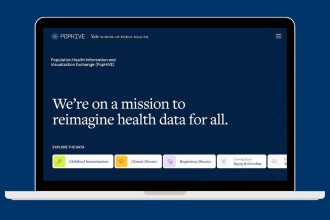Canada is known for its welcoming environment, diverse culture, and high quality of life. With its strong economy and thriving job market, it is no wonder that many individuals dream of relocating there. However, for those who do not have a job offer or family sponsorship, the path to Canadian residency may seem daunting. The good news is that relocating to Canada without a sponsor is entirely possible, thanks to various immigration programs designed to attract skilled workers, entrepreneurs, and even students. In this blog post, we will explore the different pathways to moving to Canada in 2025, highlighting the most relevant immigration programs and the steps you need to take to apply successfully.
1. Express Entry System: The Fast Track to Canadian Immigration
One of the most popular and efficient pathways for skilled workers is Canada’s Express Entry system. The Express Entry system is designed for individuals who possess the necessary skills and work experience to contribute to Canada’s labor market. It selects applicants based on a points system, known as the Comprehensive Ranking System (CRS).
Key Steps to Apply Through Express Entry:
- Step 1: Determine Eligibility To apply through Express Entry, you must meet the eligibility requirements for one of the three federal immigration programs:
- Federal Skilled Worker Program (FSWP): For individuals with work experience in skilled occupations (NOC 0, A, or B).
- Federal Skilled Trades Program (FSTP): For skilled tradespeople with work experience in eligible trades.
- Canadian Experience Class (CEC): For individuals with at least one year of work experience in Canada on a valid work permit.
- Step 2: Create an Express Entry Profile Once you determine eligibility, create an online profile through the Express Entry system. The profile will assess factors such as your age, education, work experience, language proficiency, and other factors that contribute to your CRS score.
- Step 3: Receive an Invitation to Apply (ITA) Candidates with the highest CRS scores are invited to apply for permanent residence in Canada. If you receive an ITA, you will need to submit a complete application for permanent residency.
- Step 4: Submit Your Application Once you have received your ITA, submit your application for permanent residence within the required timeframe (usually 60 days). You will need to provide supporting documents, including proof of work experience, education credentials, language proficiency, and police certificates.
- Step 5: Wait for a Decision After submitting your application, the processing time typically takes around six months. If approved, you will be granted permanent resident status in Canada.
2. Provincial Nominee Program (PNP): Moving to Canada Through a Province
While many immigrants are familiar with federal programs, the Provincial Nominee Program (PNP) offers another option to relocate to Canada without a sponsor. Each province and territory in Canada has its own immigration program tailored to the specific needs of its economy and labor market. If you qualify for one of these programs, you may receive a nomination from the province, which can fast-track your application for permanent residency.
Key Steps to Apply Through a PNP:
- Step 1: Research Provincial Programs Each province or territory has its own eligibility criteria, so it is important to research the specific programs available. Some provinces have their own Express Entry streams, while others operate separate PNP pathways.
- Step 2: Apply for Nomination If you meet the criteria for a provincial program, you can submit an application directly to the province or territory. If selected, you will receive a nomination certificate.
- Step 3: Apply for Permanent Residency After receiving a nomination, you can apply for permanent residency through the federal government. A provincial nomination gives you an additional 600 points under the Express Entry system, virtually guaranteeing an Invitation to Apply (ITA).
- Step 4: Wait for a Decision After applying, the processing time for your permanent residency application will typically be six months. If approved, you will receive your Canadian permanent resident status.
3. Start-Up Visa Program: For Entrepreneurs Looking to Build in Canada
If you are an entrepreneur with a business idea that has the potential to create jobs and drive innovation, the Start-Up Visa Program might be an ideal option. This program is specifically designed to attract foreign entrepreneurs to Canada who have the skills and resources to build businesses that can compete globally.
Key Steps to Apply Through the Start-Up Visa Program:
- Step 1: Secure Support from a Designated Organization To be eligible for the Start-Up Visa Program, you must secure a commitment from one of Canada’s designated organizations. These organizations are venture capital funds, angel investors, or business incubators that are recognized by the Canadian government.
- Step 2: Submit Your Application Once you have the necessary support, you can submit your application for permanent residence. The application must include proof of the business idea’s potential for innovation, growth, and job creation.
- Step 3: Meet Language and Financial Requirements Applicants must demonstrate proficiency in either English or French and show that they have enough funds to support themselves and their family in Canada.
- Step 4: Wait for a Decision After submitting your application, processing times may vary. If your application is successful, you will receive permanent resident status.
4. Study Permits: Moving to Canada as a Student
Studying in Canada is another great way to relocate without a sponsor. Canada is home to world-renowned universities and colleges, offering a wide range of programs for international students. Once you complete your studies, you may be eligible to apply for a Post-Graduation Work Permit (PGWP), which can eventually lead to permanent residency.
Key Steps to Apply for a Study Permit:
- Step 1: Choose a Designated Learning Institution (DLI) To apply for a study permit, you must first be accepted into a Designated Learning Institution (DLI) in Canada. DLIs are schools approved by the Canadian government to host international students.
- Step 2: Apply for a Study Permit Once you have been accepted, you can apply for a study permit. You will need to provide proof of acceptance, financial support, and other documents.
- Step 3: Arrive in Canada and Begin Your Studies After obtaining your study permit, you can travel to Canada and begin your education. Be sure to maintain full-time enrollment and follow all the conditions of your permit.
- Step 4: Apply for a Work Permit and Permanent Residency Upon completing your studies, you can apply for a PGWP. This work permit will allow you to gain Canadian work experience, which may be used to qualify for permanent residency through programs like the Canadian Experience Class (CEC).
5. Family Class Sponsorship (If Applicable)
Although the focus of this blog post is on relocating to Canada without a sponsor, it’s worth noting that Family Class Sponsorship can still be an option for those with family members in Canada. While this requires a sponsor, it can be a fast and efficient route to Canadian immigration if you meet the eligibility criteria.
Final Thoughts: Moving to Canada Without a Sponsor
Relocating to Canada in 2025 is more achievable than ever, thanks to a variety of immigration programs that cater to different types of individuals. Whether you’re a skilled worker, entrepreneur, student, or someone with specific qualifications, there’s a pathway for you to live and work in Canada. The key is understanding the available programs, ensuring you meet the eligibility requirements, and submitting a complete and accurate application.
If you’re serious about making the move, start by exploring the programs discussed above and determine the one that best fits your profile. Remember that immigration laws and policies are subject to change, so it’s always a good idea to stay informed and consider consulting with an immigration expert or lawyer to navigate the process successfully.
Good luck on your journey to Canada!




There are so many ways ,but moving to Canada as a student will be more easier than any other way